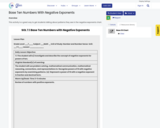
This activity is a great way to get students talking about patterns they see in the negative exponents chart.
- Subject:
- Number and Number Sense
- Material Type:
- Activity/Lab
- Author:
- Lana Reed
- Date Added:
- 05/02/2021

This activity is a great way to get students talking about patterns they see in the negative exponents chart.
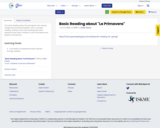
This short reading about the springtime has varying images that are downloadable. One is a simple reading. Another is the same reading with short questions that follow. Another is a fill in the blank story based on the picture.
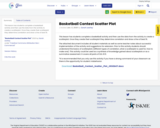
This lesson has students complete a basketball activity and then use the data from the activity to create a scatterplot. Once they create their scatterplot they determine correlation and draw a line of best fit.
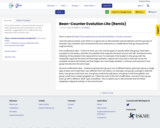
This a remix of Bean-Counter Evolution found at https://goopenva.org/courses/bean-counter-evolution, suggesting some modifications and extensions that could be used.

Foster students’ creativity as they pretend to be weather reporters using a green screen.
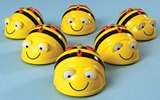
Create a Beebot Mat for students to practice SOL k.7 The student will recognize the attributes of a penny, nickel, dime, and quarter and identify the number of pennies equivalent to a nickel, a dime, and a quarter.
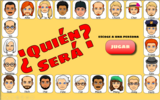
Students choose a character, then answer questions to reveal which was chosen. Practices description in Spanish. Sample game
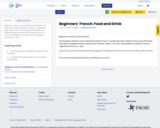
Beginners' French: Food and Drink
The students will learn how to talk about food in French. In particular, they will learn how to say what food they like and dislike using the verbs aimer (‘to like’), adorer (‘to love’), and préférer (‘to prefer’) and the negative structure ne … pas.

Students will be able to use two-letter consonant blends to decode & spell one-syllable words.

This is a slide show is intended to introduce students to networks, LAN, WAN, and WWW.
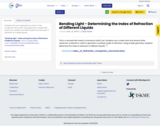
Students set up an apparatus as shown in the companion document. Using geometry coupled with Snell's Law, students are able to determine the index of refraction of multiple liquids. .
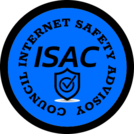
The Digital Citizenship+ (Plus) Resource Platform (DCPR) (previously called the Digital Literacy Resource Platform (DLRP)) is an evolving collection of learning experiences, visualizations, and other educational resources (collectively referred to as “tools”) designed and maintained by the Youth and Media team at the Berkman Klein Center for Internet & Society at Harvard University. You can you use the DCRP to learn about different areas of youth’s (ages 11-18) digitally connected life, including:
(1) Artificial Intelligence (AI), (2) Civic and Political Engagement, (3) Computational Thinking, (4) Content Production, (5) Context, (6) Data, (7) Digital Access, (8) Digital Economy, (9) Digital (Literacy), (10) Identity Exploration and Formation, (11) Information Quality, (12) Law, (13) Media (Literacy), (14) Positive/Respectful Behavior, (15) Privacy and Reputation, (16) Safety and Well-being, and (17) Security.
These tools aim to empower you with knowledge about connected learning environments and other parts of the digital world so you can make the choices that are right for you. If you are responsible for educating others, these tools can also support you as you teach, parent, or fill other valuable guidance roles. Our goal is to promote the co-creation of trustworthy and supportive digital spaces for all of us.
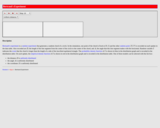
This resource consists of a Java applet and expository text. The applet is a simulation of Bertrand's experiment: a random chord on a circle The event of interest is whether the length of the chord is larger than the length of the inscribed equilateral triangle. Three models for generating the random chord can be used.
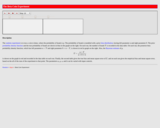
This resource consists of a Java applet and expository text. The applet illustrates Bayesian estimation of the probability of heads for a coin. The prior beta distribution, true probability of heads, and the sample size can be specified. The applet shows the posterior beta distribution.
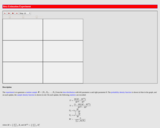
This resource consists of a Java applet and expository text. The applet simulates a random sample from a beta distribution, and computes standard point estimates of the left and right parameters. The bias and mean square error are also computed.
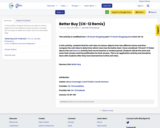
In this activity, students find the unit rates of various objects from two different stores and then compare the unit rates to determine which store has the better deal.
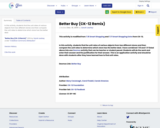
In this activity, students find the unit rates of various objects from two different stores and then compare the unit rates to determine which store has the better deal.

This resource provides a menu of self-directed art-making challenges, each of which relates to a work of art in the Virginia Museum of Fine Arts collection. Give your students voice and choice as they investigate authentic works of art and work to develop a visual language, convey complex ideas, and solve problems creatively.
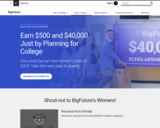
Class of 2023: Qualify Now
There are no essay, minimum GPA, test score, or citizenship requirements. It’s easy to enter scholarship drawings each month. Simply complete one of the steps before the deadline, and you’ll be automatically entered to win $500 and $40,000! Students whose families earn less than $60,000 a year have extra chances at scholarships because they’re eligible two entries each drawing.
Earn entries in monthly drawings for $500 and $40,000 scholarships by completing steps to plan for college. The sooner you start and the more steps you complete, the more chances you’ll have to win. Every month, BigFuture selects two $40,000 winners and hundreds of $500 winners who complete one or more steps.
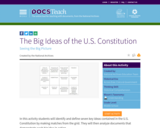
In this activity students will identify and define seven key ideas contained in the U.S. Constitution by making matches from the grid. They will then analyze documents that demonstrate each big idea in action.
This activity is designed to prepare students for the Constitution-in-Action Learning Lab at the National Archives in Washington, DC. It is a part of a package of pre-visit activities associated with the lab experience.